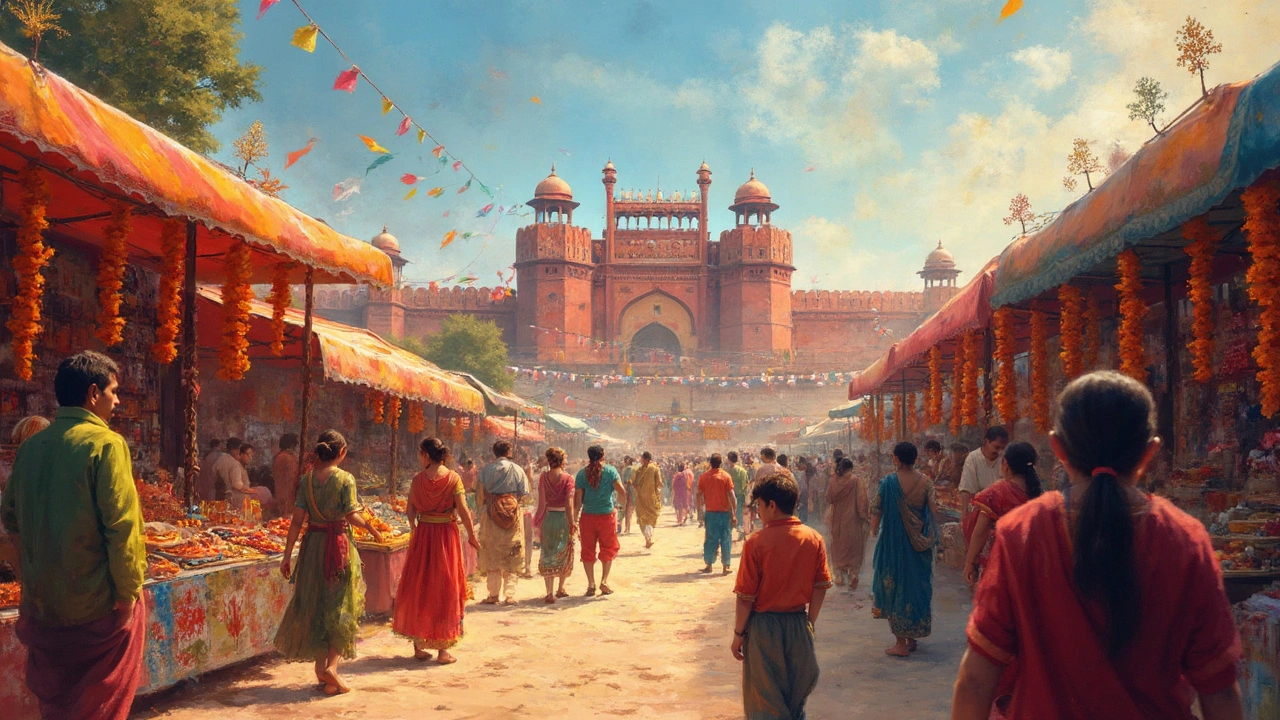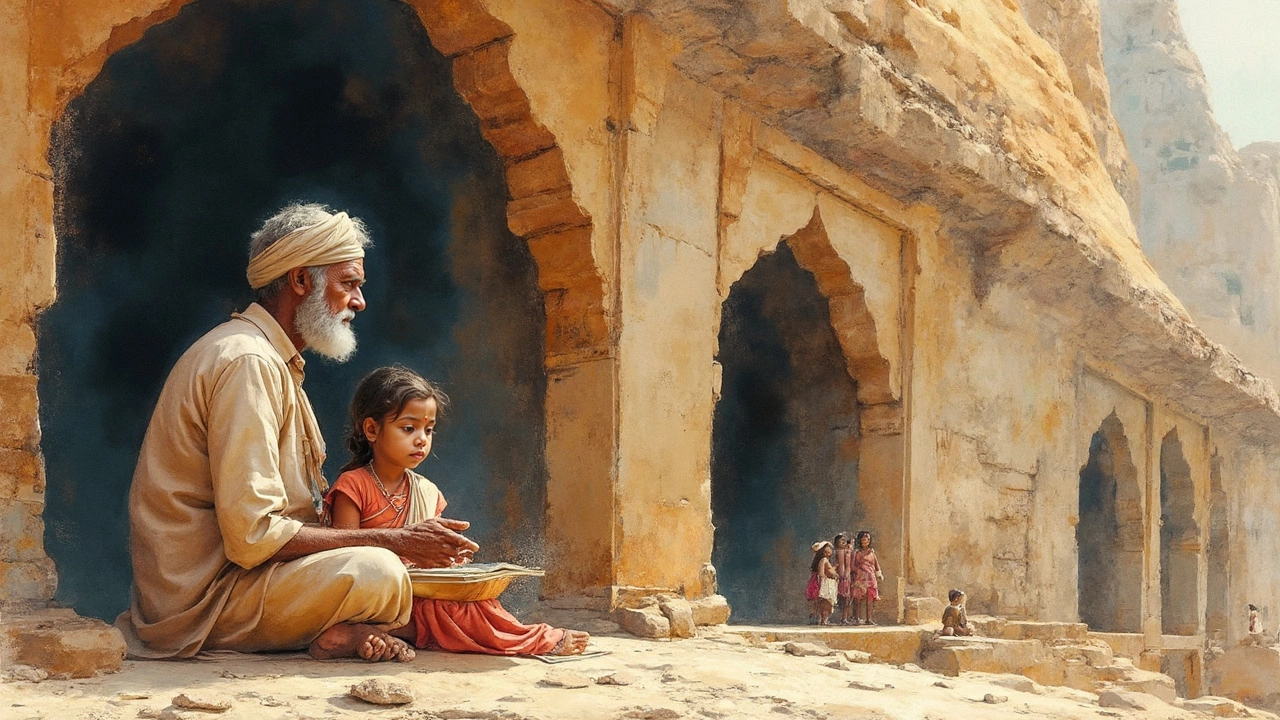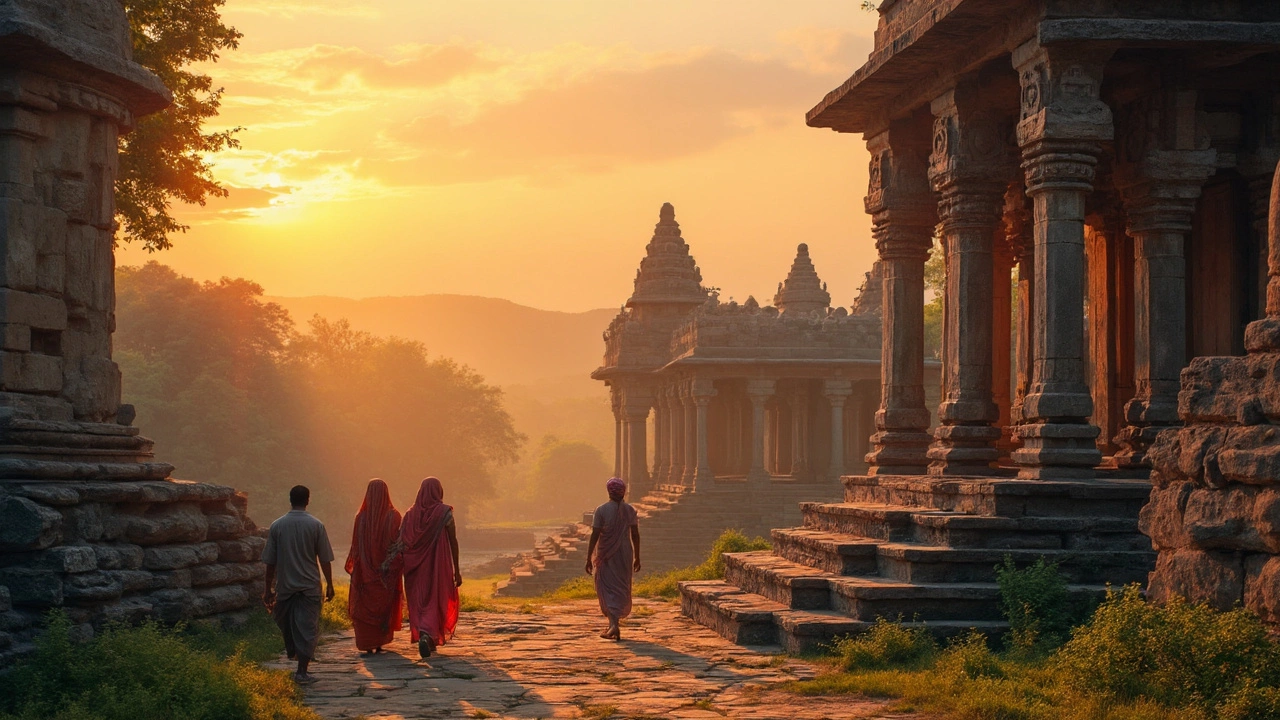People love to debate whether India is the oldest culture on Earth. You’ll see it on travel blogs, in history classes, even at family dinners—everyone has an opinion. But here’s the thing: it all boils down to what we count as culture and how we measure time. India isn’t just a country with ancient ruins; it’s alive with rituals, stories, and communities that reach way back. Some sites in India have been continuously lived in for thousands of years. That’s not just old, that’s wild.
If you’re hunting for real proof, head straight to places like Varanasi or the Indus Valley ruins. We're talking living cities and ancient bricks in the same breath. Archaeologists digging around Indus Valley spots like Dholavira found city grids and even ancient dockyards—yeah, dockyards, from over 4,000 years ago. That’s older than most written languages still in use today.
So if you're curious to actually see the layers of history, keep reading. There’s a ton of practical stuff to know before you dive into these sites: where to go, what to look for, and how not to get overwhelmed by the sheer scale of the past. Want to walk between history and the present? India’s heritage sites are the best place to start.
- What Makes a Culture 'Oldest'?
- India’s Timeline: Facts and Myths
- Must-See Ancient Heritage Sites
- Modern Traditions Rooted in History
- Tips for Exploring India’s Ancient Wonders
What Makes a Culture 'Oldest'?
So, what exactly does it even mean to call something the oldest culture? People toss this term around a lot, but when you look closer, there’s more to it than just counting years. Most historians and archaeologists look at a few things:
- Continuous Living Traditions: Is there a living connection from ancient times to today? Does the culture still carry on those old practices?
- Ancient Settlements: Are there super-old cities or ruins that show people lived and built things here long ago?
- Written Records: Is there actual evidence—texts, etchings, inscriptions—that give us a timeline?
- Unique Language and Art: Did the community have its own way of writing, creating, and thinking, separate from everyone else?
Let’s get specific. A place like the Indus Valley (in present-day India and Pakistan) checks a bunch of these boxes. Archaeologists found planned cities, running water systems, even ancient toilets. That’s way ahead of a lot of places from the same age, around 2,600 BCE. But some people argue that cultures like the Aboriginal Australians also have ancient roots—oral traditions possibly going back 50,000 years, though there’s less in the way of big stone ruins or written material.
Here's an easy breakdown of what some experts look for when deciding what’s "oldest":
| Criteria | Why It Matters |
|---|---|
| Continuous Tradition | Shows the culture survived all sorts of ups and downs |
| Old Ruins or Archaeology | Hard proof people lived and created things here long ago |
| Written or Inscribed Records | Makes it easy to date important events and rulers |
| Distinct Language/Art | Points to a unique identity (not just borrowed from neighbors) |
Here’s the bottom line: being the oldest culture isn’t just about who came first, but about how much of those roots you can actually trace and still experience today. India’s strength? It not only has ancient bones and bricks but also everyday traditions that link straight back to those roots. That’s rare, and honestly, pretty awesome.
India’s Timeline: Facts and Myths
When you start looking at India and its history, things get complicated fast. Some folks say India is the world’s oldest civilization, but that really depends on how you define 'oldest.' Are we counting how long people have lived in one place, how long traditions have lasted, or how advanced cities got?
Let’s start with what archaeologists actually dug up. The Indus Valley Civilization—sites like Mohenjo-daro, Harappa, and Dholavira—date back to around 2600 BCE, or about 4,600 years ago. That’s in the same league as ancient Egypt and Mesopotamia. What’s wild is how advanced they were: city grids, drainage, even early toilets. No pyramids, but lots of daily-life tech.
Now, if you’re talking written tradition, the Vedas—sacred Indian texts—are some of the oldest going. Most scholars say the Rig Veda was put together around 1500 BCE. Nobody can say for sure what happened before that, because there’s no clear evidence, just guesses and stories passed down.
Here’s a quick look at how India stacks up with other ancient cultures:
| Region | Known Ancient Civilization | Approx. Starting Date (BCE) |
|---|---|---|
| India | Indus Valley | 2600 |
| Egypt | Old Kingdom | 2700 |
| Mesopotamia | Sumerians | 3000 |
| China | Xia Dynasty (disputed) | 2100 |
Here’s where the myths come in. Some stories say Indian culture goes back tens of thousands of years. You’ll hear talk of '10,000-year-old' cities or that Sanskrit is the mother of all languages. The truth? There’s zero hard proof for settlements or languages in India that old—at least, so far. It’s super tempting to believe, but the real, date-stamped ruins just don’t go back quite that far.
So what can you trust? Stick with what’s been dug out of the ground and carbon-dated. Remember: there are still lots of unexplored sites, and every year, new discoveries pop up. But for now, the facts say India’s ancient civilization sits comfortably among the oldest—but it’s not the single oldest, no matter what the stories say.

Must-See Ancient Heritage Sites
If you want real evidence of India as an ancient civilization, start with its UNESCO World Heritage Sites. These places aren’t just old—they tell stories about how people lived, traded, worshipped, and shaped ideas thousands of years back.
Indus Valley Civilization sites, especially Harappa and Mohenjo-daro (in present-day Pakistan) and Dholavira (in Gujarat, India), are game-changers. Dholavira’s water management system would put some modern cities to shame. The city had everything—streets laid out in grids, massive walls, and even sports grounds, all from 4,500 years ago. Dholavira was officially tagged a World Heritage Site in 2021, and you can still walk through its wide, ancient streets today.
Then you’ve got Varanasi. For many, this place is the oldest continuously inhabited city in the world. Pilgrims come here to bathe in the Ganges, just as people did thousands of years ago. That’s living history. Or take Hampi, a city of boulders, ruins, and unbelievably detailed carvings. In its heyday (around the 14th to 16th centuries), Hampi was bigger than Paris. Now it’s scattered with temples and bazaars—pure time travel for visitors.
Can’t skip Khajuraho, either, with its jaw-dropping temples. Built about a thousand years ago, these aren’t just old stones—they’re proof of artistic genius and advanced engineering. The erotic carvings still spark debates, so you know they made an impact.
If you’re into ancient science, Nalanda is a must-visit. It was the Ivy League of ancient India, attracting students and scholars from all over Asia as far back as the 5th century. Imagine people hiking for months just to sit in these classrooms.
Not sure where to start? Here’s a list of top heritage sites if you want to see the breadth of India’s ancient history up close:
- Dholavira – advanced city of the Indus Valley
- Varanasi – spiritual and cultural epicenter
- Hampi – lost city of the Vijayanagara Empire
- Khajuraho – temples famous for their unique carvings
- Nalanda – ruins of the world’s oldest university
Here’s a quick look at just how old some of these sites are:
| Site | Estimated Age | Current State |
|---|---|---|
| Dholavira | 4,500 years | Archaeological Ruins |
| Varanasi | 3,000+ years (inhabited) | Living City |
| Hampi | 700 years | Ruin & Pilgrimage Site |
| Khajuraho | 1,000 years | Active Temples |
| Nalanda | 1,700 years | Ruins & Museum |
If you want to feel the pulse of ancient India, these sites are a solid start. Just remember, the crowds are real almost year-round, especially at Varanasi and Hampi. Best tip? Go early or pick weekdays for a more peaceful wander. Also, grab a local guide—they know hidden corners and legends Google just can’t tell you.
Modern Traditions Rooted in History
One thing that blows people’s minds about India is how old customs show up everywhere in daily life. This isn’t just about museums or festivals for the tourists. For example, the river Ganga isn’t just a sacred spot; the sunrise rituals in Varanasi happen every day, just like they have for thousands of years. Locals and visitors gather on the ghats, light lamps, and chant—real continuity you can see and feel.
If you check out the living traditions of Ayurveda, India’s ancient system of medicine, you’ll spot recipes and remedies nearly unchanged since the Vedic period. Even big trends like yoga aren’t some rediscovered fad—in places like Rishikesh, some families have taught yoga for generations. That direct passing down of practice is rare anywhere else in the world.
- Diwali, India’s festival of lights, traces back over 2,500 years to Sanskrit texts. It’s not just candles and sweets; the rituals practiced today connect to old myths found in heritage sites like Ayodhya and Ramayana murals in Hampi.
- The art of block printing you see in Rajasthan markets? Chippa communities have followed the same printing and dyeing methods since at least the 12th century, passed down workshop to workshop.
- Even street food has roots in history. Chaat, that delicious snack in every city, popped up in North India centuries back as a remedy for water-borne diseases, blending Ayurveda and local spices together.
For anyone looking to track these roots, heritage cities like Mathura, Madurai, and Thanjavur still celebrate classical music and dance forms tied to ancient temples. The civilization may be old, but you’ll see it in action every day—through language, food, religious rituals, crafts, and local festivals.
| Tradition | Estimated Age | Where to See It |
|---|---|---|
| Aarti Ceremony | 3000+ years | Varanasi, Haridwar |
| Yoga Practice | 2000+ years | Rishikesh, Mysore |
| Block Printing | 800+ years | Jaipur, Bagru |
If you’re after more than just sightseeing, plan your trips around a local festival or workshop. It’s the easiest way to witness history in daily life—because in India, ancient doesn’t live behind glass; it walks the streets with everyone else.

Tips for Exploring India’s Ancient Wonders
Alright, ready to see India’s true age up close? Visiting ancient heritage sites in India isn’t like strolling through a typical museum. You’re talking about active temples, massive ruins, and sometimes whole towns that have been around for thousands of years. Here’s how to do it right and actually enjoy the history—without missing something important or getting completely frazzled:
- Pick the Right Time: Most ancient sites—think Hampi, Mahabalipuram, and Dholavira—are best explored early in the morning when it's cooler and way less crowded. October to March is perfect since summer sun can turn exploration into survival training.
- Respect Local Customs: Many old temples and ghats are still in use. If you’re visiting places like Varanasi or Kashi Vishwanath Temple, dress modestly and follow the rules—no shoes inside, and photography might be off-limits in some spots.
- Go with a Guide: Want the stories you won’t find on tourist plaques? Hire a local guide. Take Hampi, for instance—what looks like scattered rocks is actually a city legend waiting to be unpacked, from secret doors to bazaars. Guides will mention curious details, like the musical pillars at the Vittala Temple.
- Don’t Just Hit the Big Names: Sure, the Taj Mahal is a must-see, but don’t skip lesser-known spots like Rakhigarhi (a major Indus Valley site) or Sanchi’s ancient Buddhist stupa. Some of these places see only a handful of visitors each day.
- Tech-Savvy Explorer? Many big places offer audio guides with QR codes. Bring headphones, so you don’t annoy everyone around. Apps like Incredible India or ASI India are goldmines for maps, facts, and tips for all major heritage sites.
- Stay Hydrated and Sun-Smart: This sounds basic, but between exploring ancient ruins and city heat, dehydration sneaks up fast. Always carry a water bottle, snack, and, yes, a hat.
Worried about getting to these sites? India’s heritage wonders are often close to big towns. And for the far-flung ones like Dholavira (locate this one in Gujarat), local buses and tourist taxis are your best friends.
If you’re a stats person, check out just how old these places really are:
| Site | Region | Estimated Age (Years BC) |
|---|---|---|
| Rakhigarhi (Indus Valley) | Haryana | ~3300 BC |
| Varanasi | Uttar Pradesh | Continuously inhabited for 3,000+ years |
| Hampi | Karnataka | 1300s AD, built on older ruins |
| Sanchi Stupa | Madhya Pradesh | 3rd century BC |
Bottom line: take your time, respect the living culture, and come ready for surprises. India really does pack some of the world’s oldest living histories into one wild trip.
